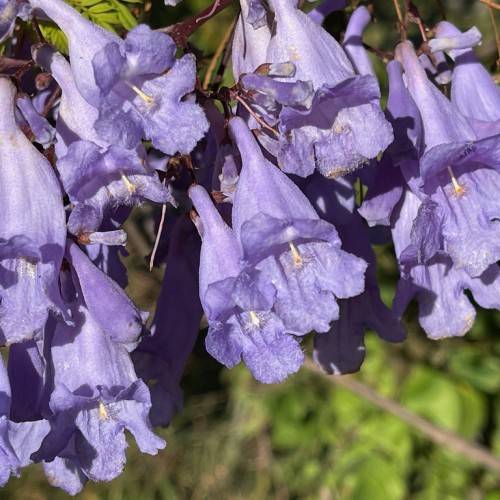
black poui
Jacaranda mimosifolia
Cycle:
Perennial
Watering:
Average
Hardiness Zone:
10 - 11
Flowers:
Flowers
Sun:
Full sun
Leaf:
Yes
Growth Rate:
High
Maintenance:
Moderate
Drought Tolerant:
Yes
Salt Tolerant:
Yes
Invasive:
Yes
Care Level:
Medium
watering
Black poui should be watered once per week. Water thoroughly, providing enough water so that it runs out of the bottom of the pot. The soil should be kept lightly moist, but not soggy or overly wet. Water deeply enough so that the moisture penetrates down to the root zone. Avoid frequent light watering, as this can lead to root rot. During the summer, you may need to increase the frequency of watering, and in winter you may need to reduce it. Keep an eye on your plant and water accordingly.
sunlight
The black poui (Jacaranda mimsifolia) is native to South America and likes plenty of bright sunlight to thrive. It does best if planted in full sun or partial shade, but it can also tolerate some shade. In general, it requires at least 6 hours of direct sunlight per day in order to grow and flower properly. Direct sunlight means that the sun is not blocked by trees, buildings, or other structures. In tropical climates, such as in South and Central America, black poui can have an extended growing season that happens all year round. During this time, the plant will benefit from the maximum amount of direct sunlight available, which can be up to 12 hours a day. In cooler climates, such as in the United States and Europe, the plant is more of a seasonal bloomer and prefers a dormant period or resting stage during winter months. During this time, the plant should have 4-6 hours of direct sunlight every day in order to ensure healthy growth and flowering when the warmer season starts.
pruning
Black poui (Jacaranda mimosifolia) should be pruned in late spring or early summer after flowering has ended. If left to bloom for too long, it can become woody and overgrown. The best time to prune is when the new growth begins around late spring or early summer, after the plant has finished flowering. To keep it healthy and manageable, remove no more than a third of the total growth. For regular maintenance pruning, focus on addressing any dead wood or branches, uprighting any branches that are in the way or crossing over, and thinning if necessary.
